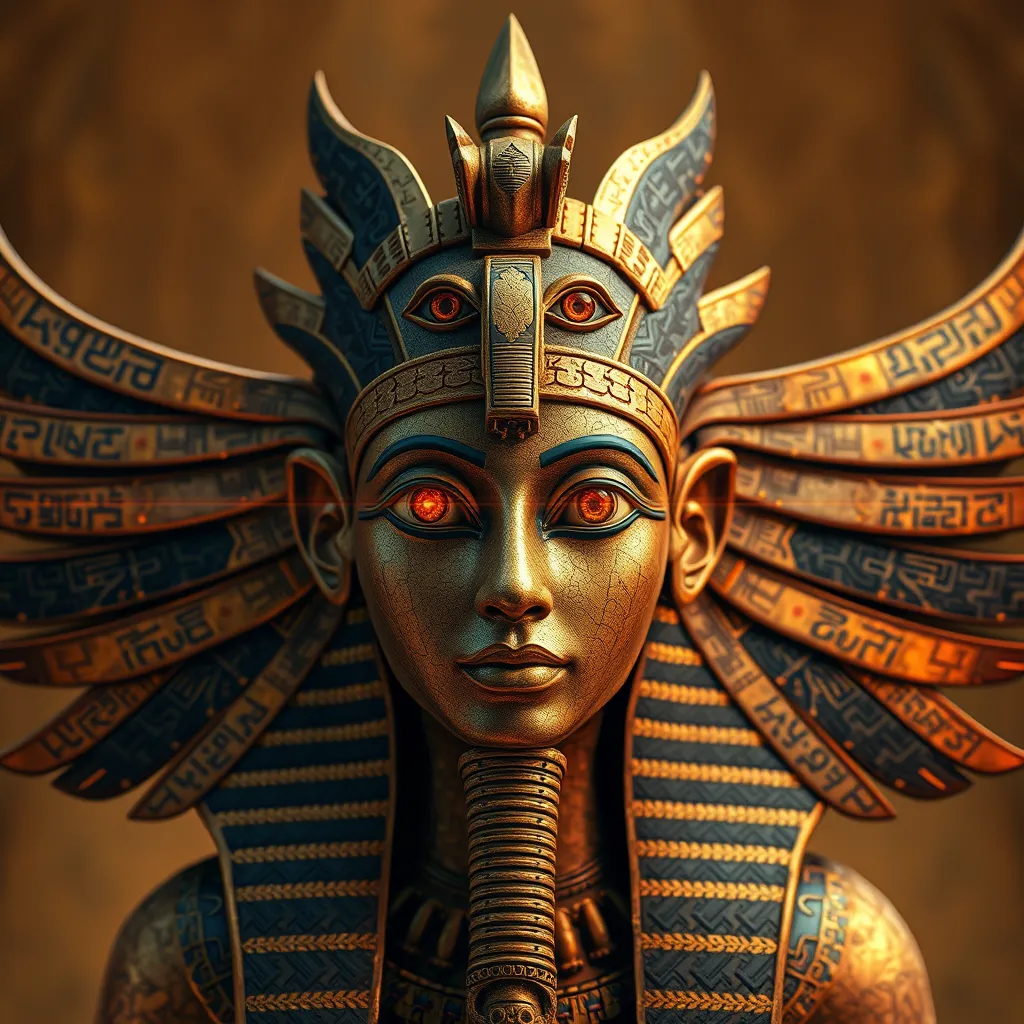The Eye of Ra: The Power of Sekhmet in Modern Culture
I. Introduction
The Eye of Ra is a powerful symbol rooted in ancient Egyptian mythology, representing the sun’s fierce and protective qualities. It is often associated with various deities, but none as prominently as Sekhmet, the lioness goddess of war, healing, and protection. Sekhmet embodies the duality of destruction and regeneration, a theme that resonates through the ages.
This article aims to explore Sekhmet’s profound influence in modern culture, highlighting her representation in art, literature, spiritual practices, and popular culture. By examining these facets, we can appreciate how this ancient deity continues to inspire and empower contemporary society.
II. Historical Context of Sekhmet
Sekhmet, often depicted as a lioness or a woman with a lioness head, originates from ancient Egyptian religion, emerging as one of the most formidable deities in the pantheon. She was revered as the goddess of war, known for her fierce nature, but also as a healer who could bring about restoration and health.
The Eye of Ra symbolizes the sun’s power and is often linked to Sekhmet as she embodies its wrath and healing qualities. This connection emphasizes her role in maintaining cosmic order through both destruction and healing.
- Warrior Aspect: Sekhmet was invoked in battles for protection and victory.
- Healing Aspect: She was also called upon for her abilities to heal the sick and wounded.
The duality of Sekhmet is a significant theme in ancient Egyptian beliefs, reinforcing the idea that destruction can lead to renewal and healing.
III. Sekhmet’s Representation in Modern Art
In contemporary visual arts, Sekhmet’s imagery has gained renewed interest. Artists explore her fierce essence and symbolic attributes, often integrating her into modern themes of power and femininity.
Notable representations include:
- Sculptures: Many modern sculptures depict Sekhmet in innovative ways, showcasing her strength and grace.
- Installations: Artists use installations to evoke the powerful presence of Sekhmet, combining traditional motifs with modern aesthetics.
Case studies of notable artists inspired by Sekhmet include:
- Kara Walker: Incorporates themes of race and power through the lens of historical figures, including Sekhmet.
- Yinka Shonibare: Uses fabric and form to challenge perceptions of identity and cultural heritage, referencing Sekhmet’s attributes.
IV. Sekhmet in Literature and Media
Sekhmet has found her way into contemporary literature and poetry, often representing themes of strength, resilience, and the complexity of femininity. Writers draw upon her dual nature to explore conflicts and healing in human experiences.
In film and television, Sekhmet’s character is frequently employed to symbolize powerful women or divine wrath, serving as a metaphor for societal issues. Examples include:
- Documentaries: Films exploring ancient Egyptian mythology often delve into Sekhmet’s significance.
- Fantasy Series: Shows featuring mythological figures frequently include Sekhmet as a character representing power and conflict.
In graphic novels and comics, Sekhmet is often reimagined as a warrior goddess, representing strength and fighting against oppression.
V. The Spiritual and Healing Aspects of Sekhmet
In recent years, there has been a resurgence of interest in Sekhmet within modern spiritual practices. Many individuals and groups have adopted her as a symbol of empowerment and healing.
Her attributes are embraced in contemporary wellness culture, where she is viewed as a source of strength and resilience. Examples of rituals and practices inspired by Sekhmet include:
- Healing Circles: Group gatherings focusing on healing through Sekhmet’s energy.
- Rituals: Ceremonies that invoke Sekhmet for personal empowerment and protection.
VI. Sekhmet in Popular Culture
In popular culture, Sekhmet is depicted in various forms of media, reflecting her significance in modern narratives. Video games often feature her as a powerful character, embodying the warrior aspect of her mythology.
Fashion and design trends have also drawn inspiration from Sekhmet, with her imagery appearing in clothing, accessories, and home decor. Merchandise and branding featuring Sekhmet highlight her aesthetic appeal and symbolic meaning.
VII. The Feminist Reclamation of Sekhmet
Sekhmet has become a powerful symbol of feminine strength and resilience, particularly within feminist movements. Her representation as a fierce goddess challenges traditional portrayals of women in mythology.
The impact of feminist movements on the reinterpretation of Sekhmet is evident in various discussions surrounding gender and power. She serves as a reminder of the strength inherent in femininity and the importance of reclaiming powerful female figures in history.
VIII. Conclusion
Sekhmet’s enduring legacy and relevance in modern culture highlight the timeless nature of ancient mythology. Her duality as a goddess of war and healing resonates in various aspects of contemporary life, from art to spirituality.
As we integrate ancient mythological figures into our current narratives, we are reminded of the power they hold and the lessons they impart. The exploration of Sekhmet encourages further inquiry into her significance today, inviting us to embrace her strength, resilience, and protective nature.




